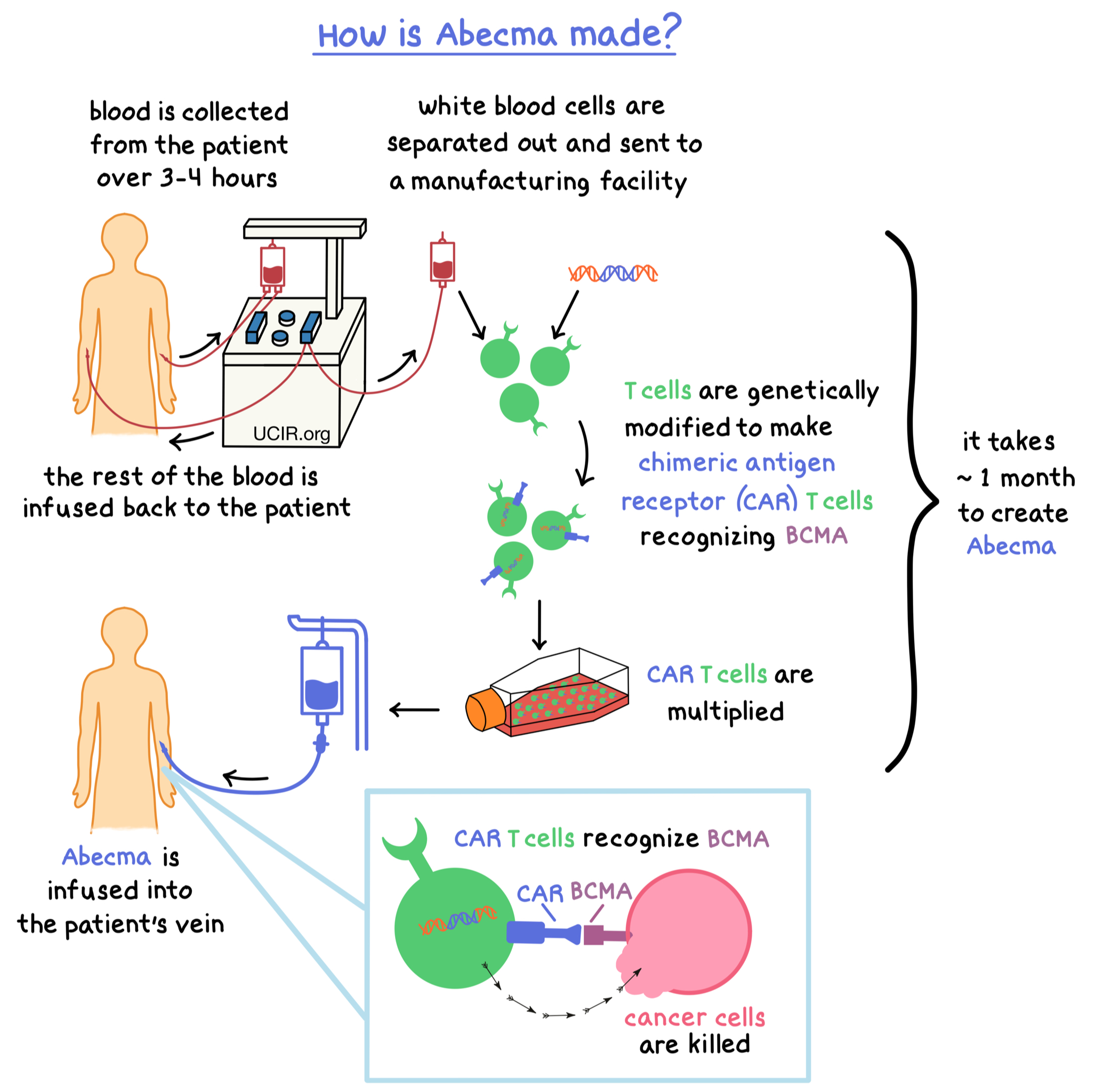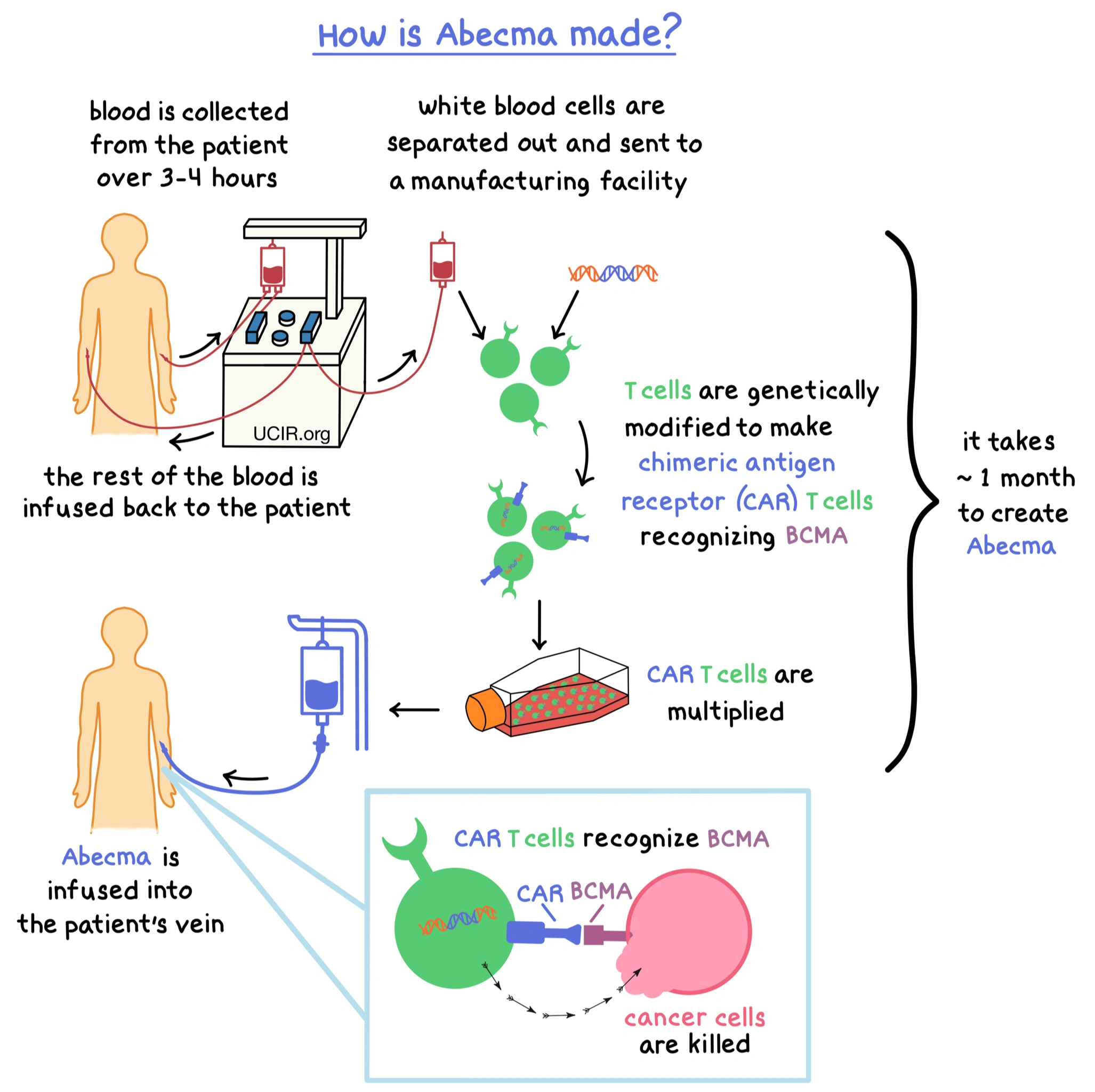
No More Waiting Games
Let me set the scene. Picture yourself finally bouncing back after a round (or five) of intense treatment for multiple myeloma. You’re tentatively optimistic, maybe even daring to plan that much-needed vacation. But then—you feel tired again. Blood test results look strange. Your doctor calls right away. The cancer’s back, and it’s not responding to the usual tricks. Heart drops, the world tilts a little. If you’ve ever been there (or just worry you might be), you know: the waiting and watching is agony. That pit-of-the-stomach uncertainty? It’s brutal.
Here’s the good news—things in myeloma treatment aren’t what they used to be just a few years ago. There’s something called abecma for multiple myeloma that’s actually giving folks real hope again… and not just after you’ve run out of all other options. Let’s talk it out, friend to friend.
What Makes Abecma Different?
Wait, is this gene therapy? Like, science fiction?
Almost! But it’s real. Abecma (idecabtagene vicleucel, if you like tongue-twisters) is what they call a CAR T-cell therapy. That stands for “chimeric antigen receptor T-cell.” Don’t worry, you don’t need to memorize that. Just know that it’s a treatment that uses your own immune cells—a bit of your literal self—souped up in a lab to become expert cancer hunters research on the EMA site explains.
Here’s how it breaks down, in non-doctor speak:
- Docs take some of your T-cells (your body’s natural “security guards”).
- In a special lab, they give those cells special “glasses” (receptors) so they can spot a protein called BCMA—this is basically a neon sign on myeloma cells shouting “I’m the bad guy!”
- Your new, savvy T-cells are multiplied (think, army-style!) then put back into your body to hunt down and destroy those problem cells.
It’s a one-time treatment, not endless infusions. And it’s not sci-fi anymore… it’s part of real survival stories.
Small real-life moment:
I read about a woman who said, “After abecma, I could take a deep breath again. I got to walk in the park with my grandkids—not just watch, but actually walk. That’s a big deal after years of feeling shackled to chemo.” That sticks with me. Because that’s not just more months on a clock—it’s actual living.
Why Now? Why Earlier?
So… who’s this for, actually?
Not long ago, abecma was only for folks who’d already tried (and failed) four or more other treatments. That’s a lot. Exhausting physically, emotionally, and, let’s be honest, financially too. But after tons of data from studies (the KarMMa-3 trial, if you want specifics), the FDA finally agreed: abecma for multiple myeloma should be offered much earlier—after you’ve tried two regimens (which usually means you’ve exhausted the three big classes: immunomodulatory, proteasome inhibitor, anti-CD38 antibody) and things still aren’t looking up see details in the International Myeloma Foundation review.
Not “wait until every road is blocked.” More like—let’s not let hope run out before trying this cellular “reset.”
And when people do get abecma earlier? The data says the average time their cancer stayed away (progression-free survival) tripled. We’re talking 13 months vs. about 4. That’s a lot of birthdays, holidays, Wednesdays.
Story time:
One patient shared how getting access to abecma as a third treatment—while he still had energy and hope—meant he could actually travel with his kids again. “We went to Yellowstone. I thought those family photos were a lost cause. Not anymore.” Little wins, big heart stuff.
Okay, But How Does It Actually Work?
This BCMA thing… what is it?
Great question. The magic “target” for abecma is Abecma target antigen, which is BCMA—a fancy word for “B-cell maturation antigen.” Myeloma cells have lots of it, almost like they can’t help wearing a giant blinking badge. Your normal T-cells sort of miss it, but abecma-trained cells? They never miss. They grab onto BCMA and start the process of eliminating those myeloma cells see the patient info at Abecma.com.
The science here is wild—but the results are honestly what matter. In studies, over 70% of people responded in some way. For one out of three, the cancer basically vanished from detectable levels (they call that “complete response”). Tests even revealed a special low threshold—”MRD negative”—meaning not just feeling better, but looking nearly cancer-free under the microscope published research explains more.
Let’s make this visual for a second:
| Benefit | Abecma (KarMMa-3) | Standard Therapy |
|---|---|---|
| Progression-Free Survival | 13.3-13.8 months | 4.4 months |
| Response Rate | ~73% | Much lower |
| MRD Negativity | 26% | Rare |
There’s lots more on mechanisms (if you’re curious or just love digging deep, peek at Abecma target antigen for ultra-nerdy details).
Let’s Talk Side Effects (Because… Real Life)
Doesn’t every cancer treatment have a downside?
Yeah. And abecma isn’t some magic fairy dust (how awesome would that be, though?). Real talk: most people do have some side effects. Some are mild, some serious. Most are temporary (but definitely pay attention; this therapy is only done at specialized centers for a reason).
- Cytokine Release Syndrome (CRS): About 8 in 10 will get this—fever, feeling run down. Usually managed with meds, resolves in a few days.
- Neurotoxicity: Some mental fog, confusion, headaches. Again, mostly mild, but the team will watch you closely.
- Low Blood Counts: Yup, your immune system needs a reboot after this, so infection risk is up at first.
I could list more, but… let’s just say, your team is on it. You’ll be watching reruns and eating Jell-O for a bit post-infusion. Afterwards? Some people call it “the new normal.” It’s not always picnic-perfect, but here’s the silver lining: no more endless chemo cycles. Most folks head home after a few weeks near the hospital and get back to, well, living according to treatment process info on Abecma.com.
Another “real person” glimpse:
I met a guy online—let’s call him Jake—who swears the worst side effect was cabin fever: “All I wanted was pizza from my neighborhood place. My wife brought it to the window, and I ate it with plastic utensils. Worth it.” Humor… sometimes it’s the best medicine.
One Time, Big Impact
Is abecma a forever solution?
No guarantees, but for a lot of people, abecma kicks the can way, way down the road. We’re seeing lasting results, and not just “remission” but real quality of life—trips, projects, more family time. It’s all about getting back what matters. Everybody’s timeline is different, but the plain truth is: for triple-class exposed multiple myeloma patients (those who’ve tried the usual stuff), nothing else offers a similar one-and-done, deep-response potential right now.
Now, there are other options on the horizon. Maybe you’ve heard whispers about Carvykti, another CAR T therapy. Fan of comparisons? Get into the nitty gritty with Abecma vs Carvykti—see how these cousins stack up (spoiler: both go after BCMA, but their methods and side effect timelines differ).
Your Questions, Your Call
If you’re wondering, “Should I ask about abecma for multiple myeloma even if I’m only on my second or third treatment?” The answer these days is: yes! Earlier access means you have more energy to recover, a stronger immune system, and (hopefully) more days feeling like yourself. Is it for everyone? Not always—your health, organ function, and myeloma specifics matter—so talk it over honestly with your doc.
What’s Getting Abecma Like… Day By Day?
It sounds intense—what actually happens?
We’ll walk through it. First, you’ll have something called apheresis (no, not an ancient Greek philosopher)—basically, a quick “detour” for your blood to collect T-cells. Those T-cells go to a specialized lab where they’re engineered and multiplied (a few weeks go by—time for extra reading or binge-watching).
While you wait, you’ll probably get some “bridging therapy” if your myeloma’s acting up. Once your shiny new army is ready, you’ll head into treatment—usually a short course of light chemo to “clear space,” like decluttering your immune system to make room for the new defenders.
Then, the “main event”—one infusion, like an IV drip. You’ll stay near the hospital for a few weeks so everyone can watch for serious reactions. Once you’re in the clear, it’s back to the real world… with hopefully a lot more peace of mind. You probably need to avoid swimming in public pools or wrangling livestock for a bit. You might use that excuse to get out of family reunions—your call.
Quick tip: Bring a buddy the first week. Support matters. Share the weird hospital food. Laugh when you can.
Looking Down the Road—What’s Next?
How does abecma stack up to the future?
As more people try abecma for multiple myeloma earlier in their cancer journeys, we’re seeing a quiet revolution. Fewer “last-resort” stories, more “I got in soon enough that recovery was doable.” And, as more CAR T options appear on the scene, it’s worth peeking at head-to-heads—and yes, that’s what this Abecma vs Carvykti page does best.
Compared to older approaches, abecma’s “one-and-done” nature is what really stands out. No more endless cycles. No more “let’s see how much more I can take.” You get to focus on healing, on honest-to-goodness living.
Last Thought—You’ve Got This
So here’s the thing: abecma for multiple myeloma isn’t magic. But it is a new kind of hope… one that’s not out of reach, not reserved for “after everything else fails.” It’s available now for so many people sooner in their journey. If you (or your loved one) feel stuck, or the cancer’s pulling a comeback—don’t just assume your options are gone. Talk to your doctor. Get a second opinion if you feel lost. Read all you can. Reach out to support groups. Your voice matters here.
And maybe next year, you’ll be the one sending vacation photos—”Look at me, climbing the dunes!”—instead of watching from the sidelines.
What do you think about this approach? Would you consider a treatment that uses your own souped-up cells—or does it sound a little too sci-fi? The future’s here, and it’s, well, a little weird. But, hey, sometimes weird is what we need to get back to ourselves.
If you’re curious about the science—or just want to geek out—check resources like Abecma target antigen. Take notes. Ask questions. You deserve answers… and hope. Always hope.


















Leave a Reply
You must be logged in to post a comment.